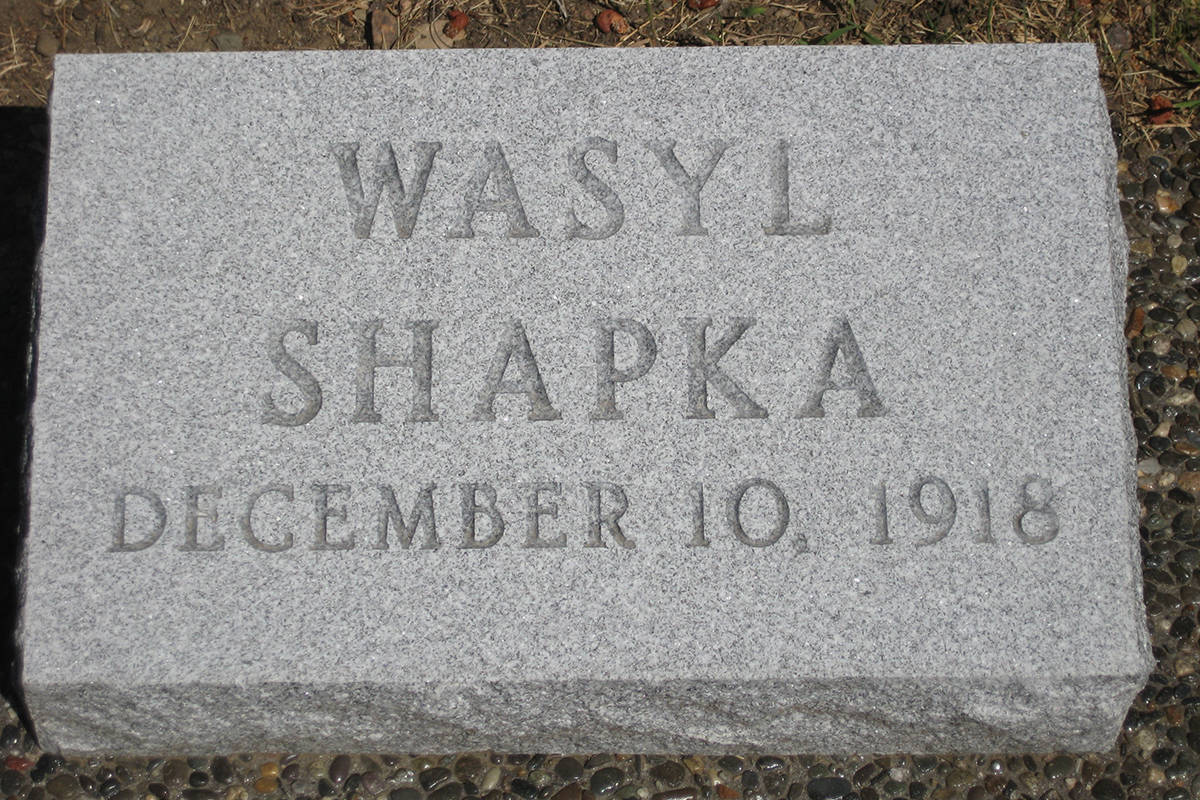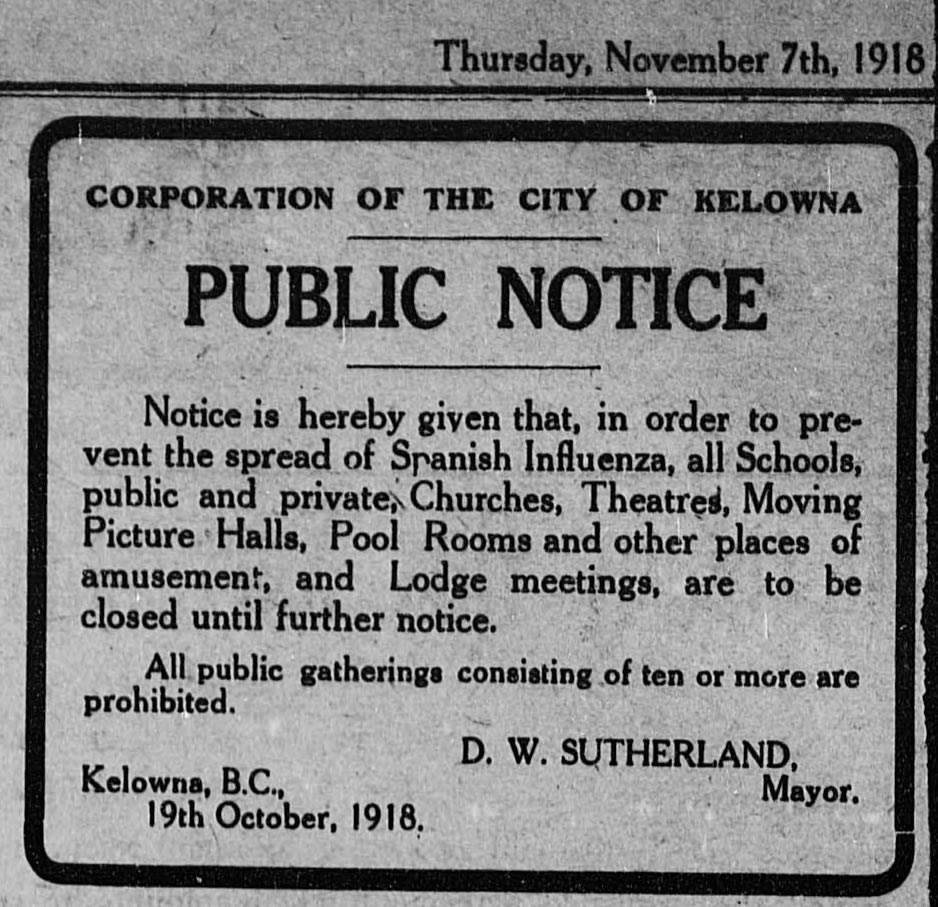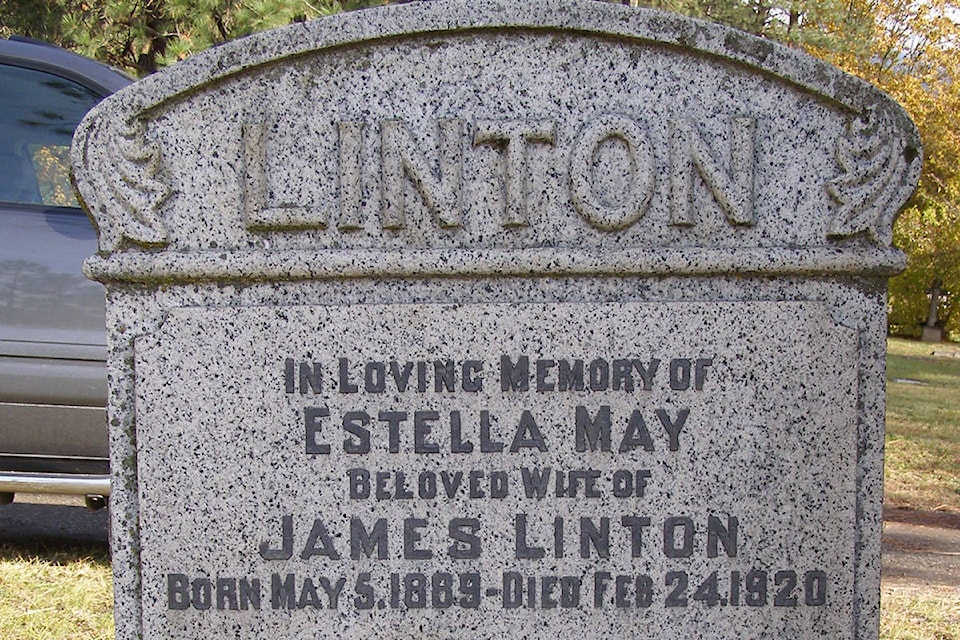More than a century ago, a worldwide pandemic hit Vernon hard.
A total of 31 people died as a result of, or in relation to, the Spanish Flu, which ran from January 1918 to December 1920. Vernon’s population prior to the start of the First World War in 1914 was approximately 3,000.
The strain of influenza was unusually deadly, the first of the two pandemics involving H1N1 influenza virus. It affected 500 million people across the world, including the Arctic and remote Pacific islands, and killed 50 to 100 million people, or three to five per cent of the world’s population.
Fast forward to 2021, Vernon – population 40,000-plus – and the world are still battling the COVID-19 virus which has killed approximately 20 citizens in local care facilities since the outbreak was declared in March 2020.
Most influenza outbreaks disproportionately kill juvenile, elderly, or already weakened patients; in contrast, the 1918 pandemic predominantly killed previously healthy young adults.
“Modern research, using virus taken from the bodies of frozen victims, has concluded that the virus kills through a cytokine storm (overreaction of the body’s immune system),” said Lawrna Myers from the Vernon and District Family History Society. “The strong immune reactions of young adults ravaged the body, whereas the weaker immune systems of children and middle-aged adults resulted in fewer deaths among those groups.”
READ MORE: Oyama scientist first to snap photo of COVID-19 in Portugal
Vernon and District Family History Society records show that of the 31 people who died of the flu, one-third were between the ages of 20 and 35; two were infants under the age of one; two were teenagers, 18 and 19, and six were in their 40s or 50s.
The two eldest persons to succumb were Mary Jane Linton, aged 74, and Rachel Lowes Fletcher, 75.
Waysl Szapka (or Shapka) was in the Vernon Internment Camp, what is now W.L. Seaton Secondary School, which opened in the First World War to house prisoners who were Ukrainian along with other Europeans. He was 26 and is buried at the Pleasant Valley Cemetery.
Frank Bailey, 25, had been employed for several years at Megaw’s Garage and, according to the Vernon News, “was a fine type of young man” who lived with his mother, Mrs. W.B.V. Bailey. He died Oct. 29, 1918, leaving behind a brother, Herbert, who was in the army serving in Europe, brother Clarence at home, and two sisters at home, and one attending college at the coast. The paper said all three sisters were “unfortunately ill with influenza.”
Many of the Vernon victims were buried at the Pleasant Valley Cemetery.
READ MORE: Six COVID-19 deaths over weekend throughout Okanagan
READ MORE: Vernon internment camp shut down 100 years ago
roger@vernonmorningstar.com
Like us on Facebook and follow us on Twitter.


